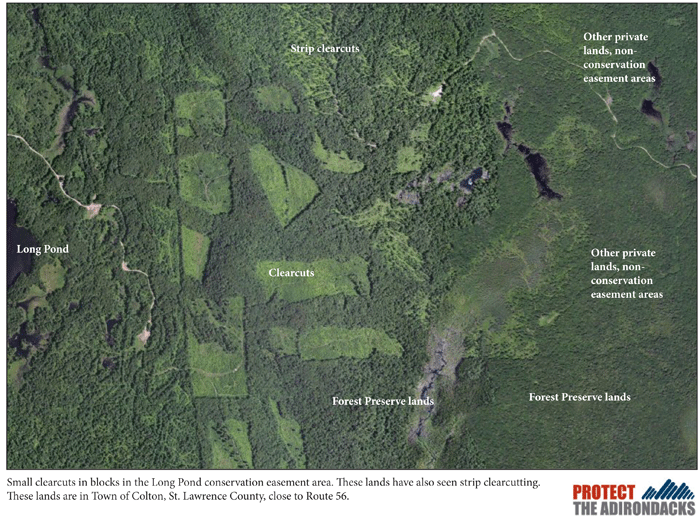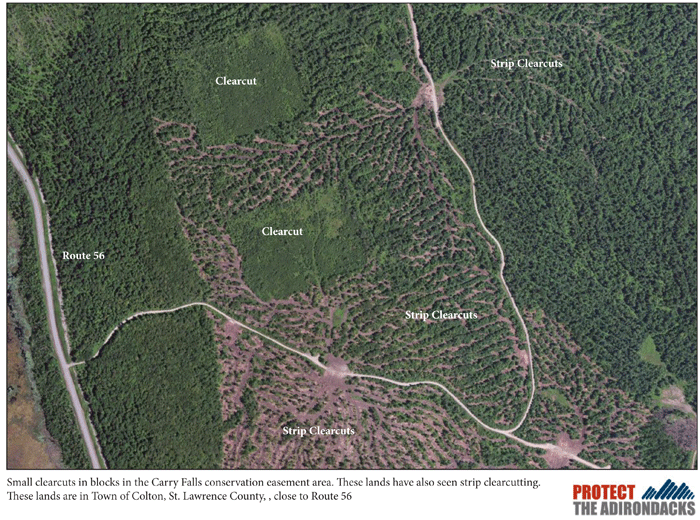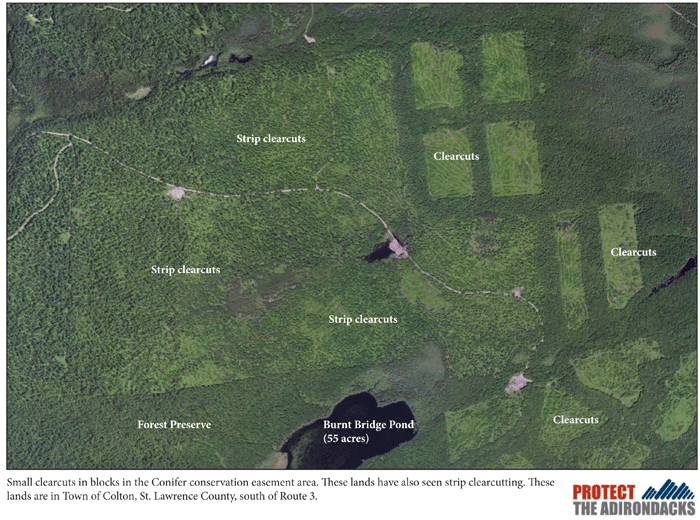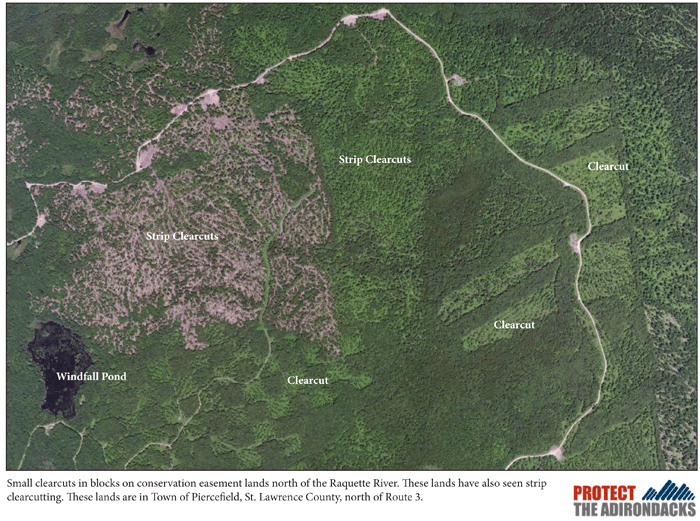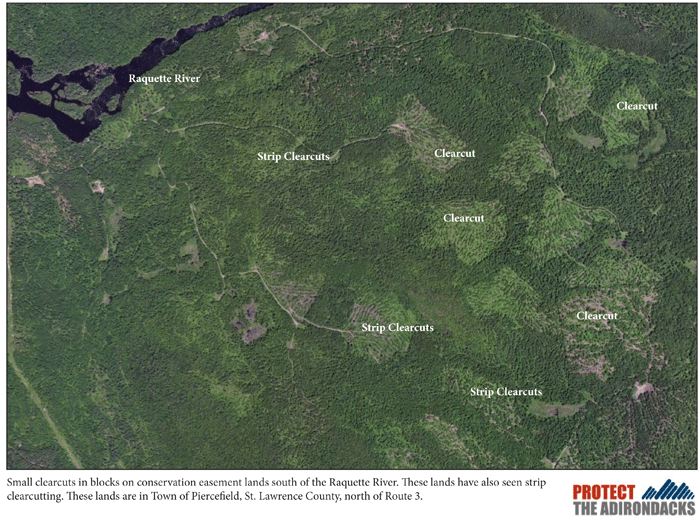The Adirondack Park Agency continues to examine changing its review process to allow a General Permit for large clearcuts on commercial forestlands. Embarking on a new era of big clearcuts has ignited controversy in the Adirondack Park; see reports here and here. The APA’s new policy will pertain to forestlands that have received sustainable forestry certification under the FSC and SFI programs. The majority of these lands commercial forestlands are subject to state conservation easements. Overwhelmingly, the forest management rights on state conservation easement lands are held by various investment funds that manage these forests short-term in 10- and 15-year investment cycles.
PROTECT finds that many of these lands are already being heavily cut with strip clearcuts, checkerboard clearcuts, and small 24-acre clear cuts. These landowners use a lot of 24-acre clearcuts to avoid APA review.
One reason that the largescale industrial forestland owners have asked for a new streamlined process to undertake big clearcuts is that they claim they need big clearcuts to regenerate a better forest. They say they want to “start over.” They want to clear the existing forest and then try to control the trees to regrow. Many challenge this position and argue that existing small clearcuts have failed to regenerate a better forest and that big clearcutting is simply a cheaper way to cut more trees.
PROTECT is now urging the APA to get out into the field and look first-hand at these clearcut landscapes and assess regeneration success or failure. PROTECT suggests that the APA visit some of the commercial forestlands that have been heavily cut to evaluate forest regeneration. Here are PROTECT’s five recommendations for heavily cut forests to visit.
Here’s a new letter that PROTECT has submitted to the APA encouraging them to get out into the field.
The APA has also re-issued its Negative Declaration under SEQRA stating no impact to this review change. Many groups find this decision legal troubling because it will effect hundreds of thousands or acres. See a group letter opposing the APA’s action.

